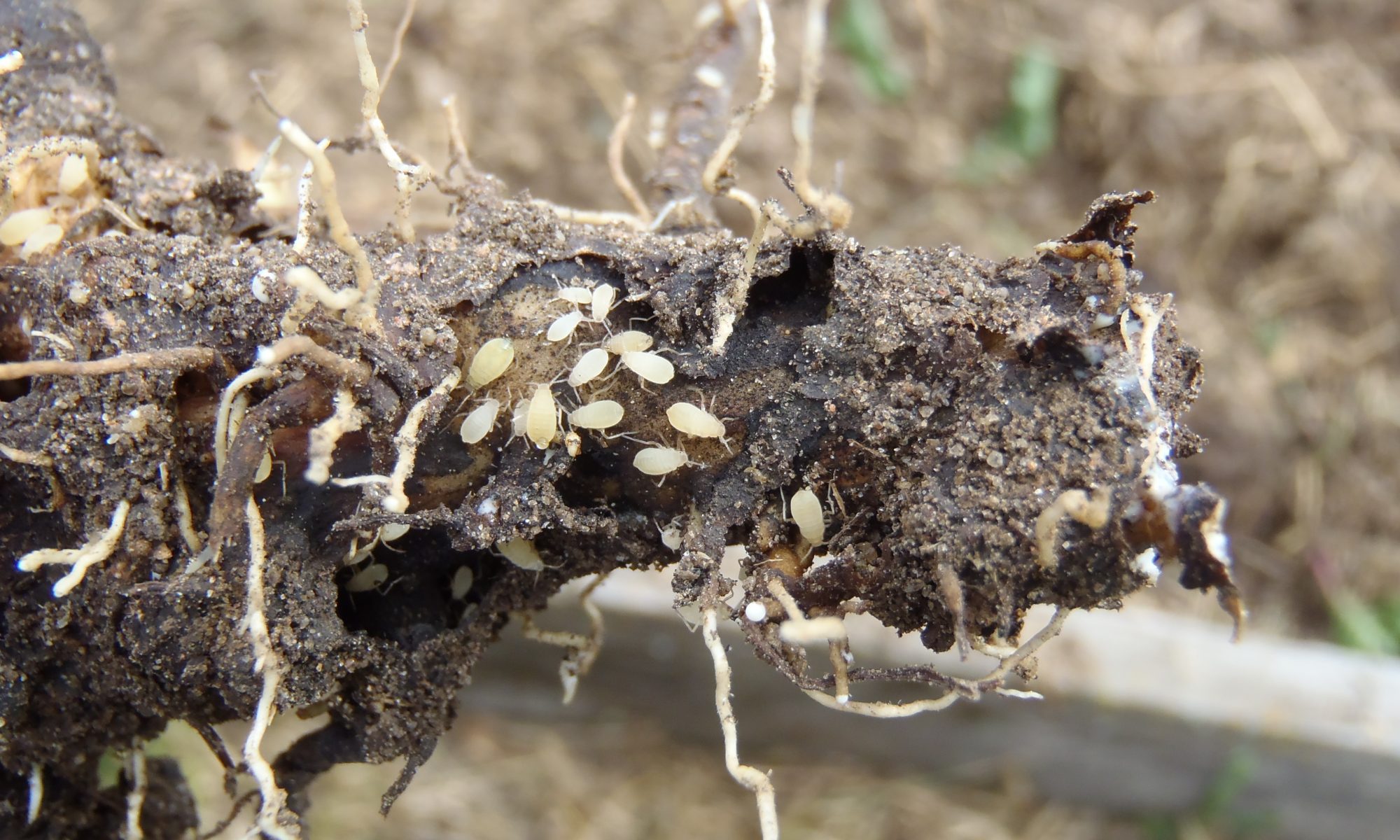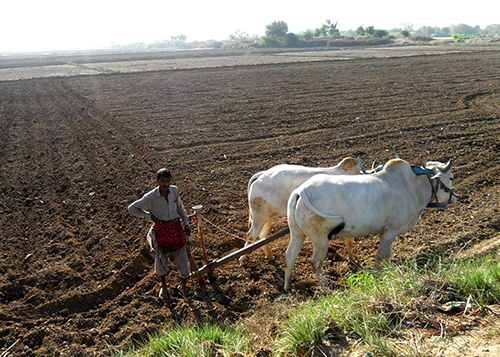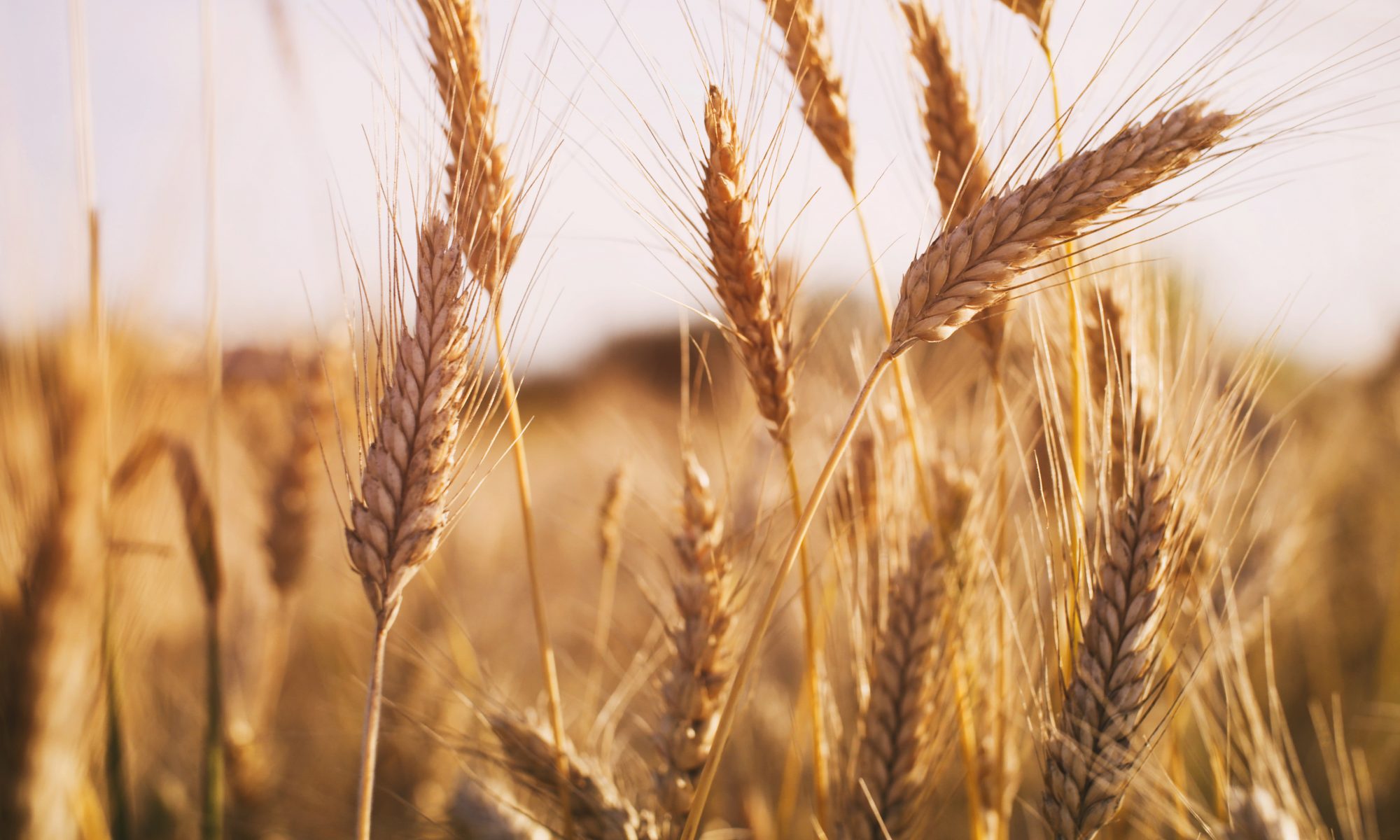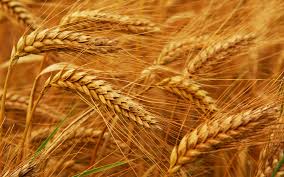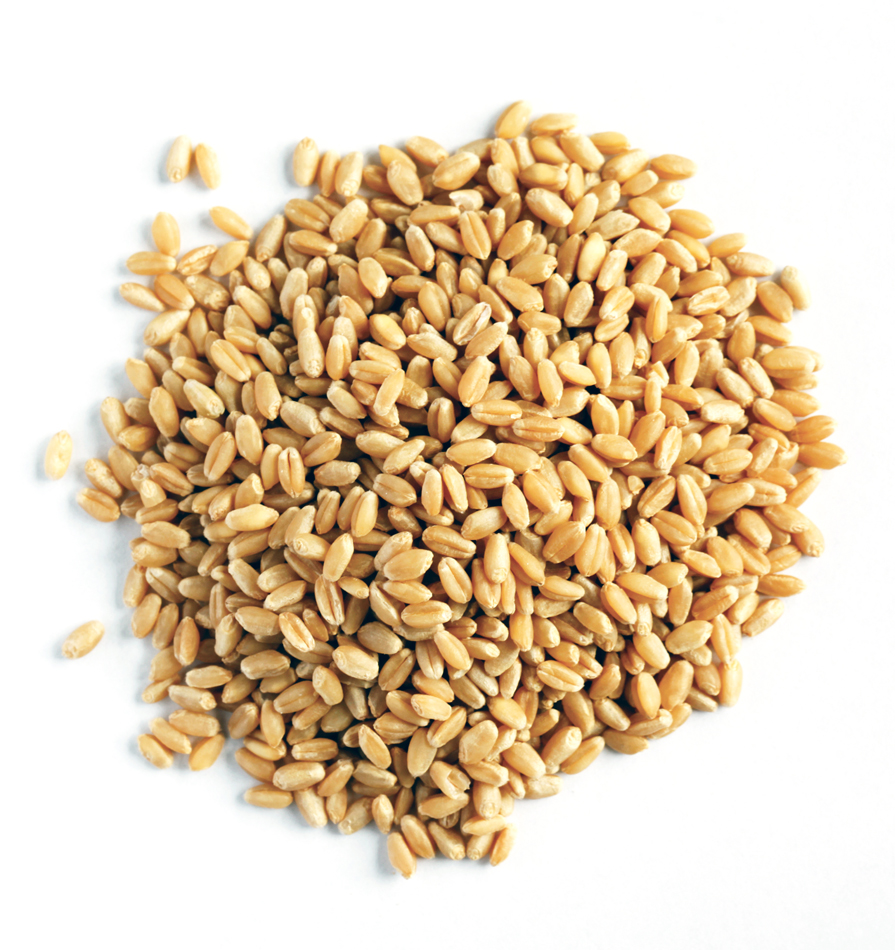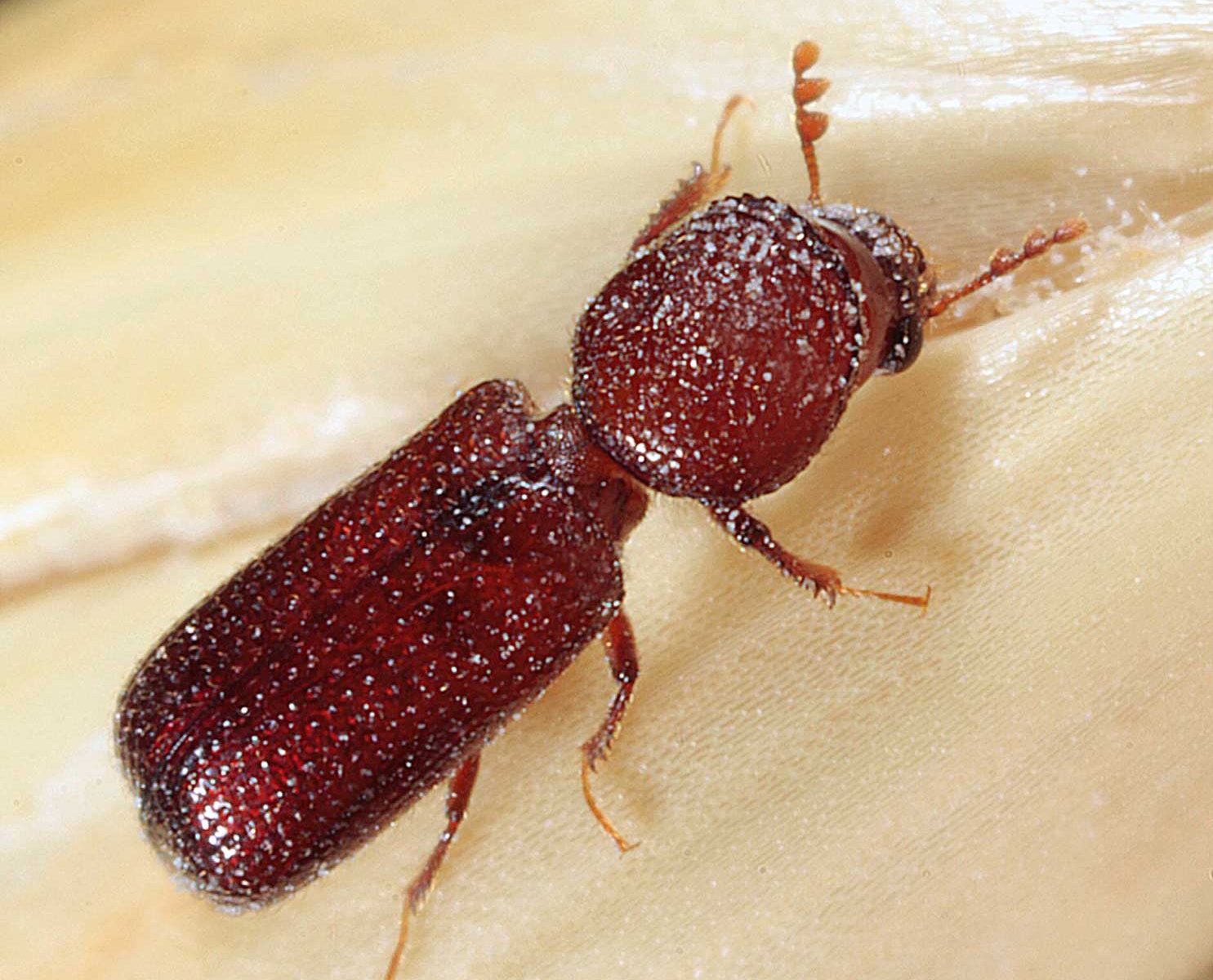- This insect is active from November to February.
- Damage is more in the rainfed and late sown crop.
- The yellowing of young plants is observed due to root aphids.
- In this case minute, yellowish-brown aphids may be present near the base or on the roots of the plant.
- Aphids also vector a viral disease name barley yellow dwarf virus (BYD). The yield of infected wheat plants can be reduced by 50%
Major Diseases and Their Control Measures of Wheat
Rust is a major disease of wheat crop and there are 4 types of rust found in wheat i.e. Yellow Rust (Strip Rust), Leaf Rust (Brown Rust), Black Rust (Stem Rust).
Symptom-
- Yellow Rust (Strip Rust) :- Stripe rust is caused by the fungus Puccinia striiformis. It is easily distinguished from other wheat rusts by the orange-yellow spores, which produce small, closely packed pustules developing into stripes along the length of the leaf veins. The spores occur on the upper surface of the leaves, the leaf sheaths, awns and inside of the glumes.
-
Favorable Condition:- Stripe rust requires cool and wet conditions to infect the crop. Free moisture on the leaves and an optimal temperature (10-15°C) are required for infection. Pustules erupt within 10-14 days after infection. The disease can cause up to 25% yield loss.
-
Leaf Rust (Brown Rust):- Leaf rust is caused by the fungus Puccinia triticinia. The disease can also infect rye and triticale. Leaf rust produces reddish-orange colored spores that occur in small, 1.5 mm, circular to oval-shaped pustules. These are found on the top surface of the leaves, distinguishing leaf rust from stem rust which is found on both surfaces of the leaf.
- Favorable Condition:- The spores require 15 to 20º C temperature and free moisture (dew/rain/irrigation) on the leaves to successfully infect wheat. The first signs of the disease (sporulation) occur 10-14 days after infection. Removal of volunteer wheat plants, which forms a green bridge for the fungus through the summer, can eliminate or delay the onset of leaf rust.
- Black Rust (Stem Rust):– Stem rust is caused by the fungus Puccinia graminis f. sp. tritici. In addition to wheat, it can also attack barley, rye, and triticale. Stem rust produces reddish-brown spore masses in oval, elongated or spindle-shaped pustules on the stems and leaves.Unlike leaf rust, pustules erupt through both sides of the leaves. Ruptured pustules release masses of stem rust spores, which are disseminated by wind and other carriers.
- Favorable Condition:- Stem rust develops at higher temperatures than the other wheat rusts within a range of 18-30°C. Spores require free moisture (dew, rain or irrigation) and take up to six hours to infect the plant and pustules can be seen after 10-20 days of infection.
Management:-
- Destroy volunteer wheat plants.
- Crop rotation is very important in the case of the yellow spot.
- Growing resistant varieties is an economical and environmentally friendly way of disease reduction.
- During the growing season active crop monitoring is very important for an early detection of diseases.
- Avoid repeated use of fungicides with the same active ingredient.
- Spray Kasugamycin 5% + Copper Oxychloride 45% WP 320 gm/acre or Propiconazole 25% EC 240 ml/Acre.
Like and share with other farmers by clicking on button below
ShareSoil Preparation and Sowing Time for Wheat
-
One summer deep plowing followed by two or three harrowing with disc or tines and two or three planking should be given to prepare a well-pulverized seedbed.
-
Suitable time of sowing
-
Dryland:- Mid October to the first week of November.
-
Semi Irrigated:- First fortnightly of November.
-
Irrigated:- Second fortnightly of November.
-
Irrigated (Late):- Second fortnightly of December.
Like and share with other farmers by clicking on the button below
ShareManagement of Termites in Wheat
Management of Termites in Wheat:-
- Termites damage the crop soon after sowing and sometimes near maturity.
- They feed on roots, stems of growing plants, even dead tissues of plant feeding on cellulose.
- The damaged plants dry up completely and are easily pulled out.
- The plants damaged at later stages give rise to white ears.
- Infestation is heavy under unirrigated conditions and in the fields where un-decomposed farmyard manure is applied before sowing.
Management –
- Apply deep ploughing before sowing.
- Use well rotten FYM in field.
- Fill kerosine in mound of termite.
- The seed should be treated with Chlorpyriphos (20% EC) @ 5 ml/kg of seed before sowing.
- Broadcast Chlorpyriphos (20% EC)@ 1 litre/Acre with any fertilizer.
Like and share with other farmers by clicking on button below
ShareNutrient Management in Wheat
Nutrient Management in Wheat:- Nutrients play an important role in wheat production. Well rotted farmyard manure (FYM) or compost should be applied at the rate of 6 to 8 tons/acre. after every two years. The FYM and compost will keep the soil physical properties in good condition-
- Apply well rotten FYM compost 15-20 ton per hac.in every 2-year interval.
- Use 88 kg Urea, 160 Kg SSP and 40 kg MOP per Acre.
- Apply urea in below three doses.
- 44 kg quantity during seed sowing.
- 22 kg during the first irrigation.
- Remain 22 kg dose during second irrigation.
- If the full quantity of phosphorus is added in the Kharif season, then add half the amount of phosphorus in Rabi.
- When you have a minimum of two irrigation may be used 175:250:35-40 Kg/ha. quantity of Urea, SSP and MOP.
- Use the full quantity of NPK at a time of basal dose on unirrigated condition.
- If wheat sowing is done in mid-December, then 25% of the nitrogen should be reduced.
Like and share with other farmers by clicking on button below
ShareStorage technique in wheat
- To maintain more power in the seed, the seed should be well dried before storage. In India, seed crops are subjected to drying in the sun for 3-4 days to safeguard the level of moisture.
- Grains with less moisture content than 10% are well stocked.
- After cleansing the grains, fill the grain in the bag and store it.
- To avoid the mixture, always place seeds in the new bag.
- Store quality grains.
- Storage keep cool in summer.
- Time to time check the grain.
Like and share with other farmers by clicking on button below.
SharePost-harvest management in wheat
- Yellow and dry straw is visual indicator.
- Shredding, breaking of spikes are overripe.
- Most suitable stage is grain moisture of 13-14 %.
- Manually harvested by reapers is dried for 3-4 days on threshing floor and threshed.
- Always store the seed in new bags in godowns and should be fumigated to keep the attack of stored grain pests.
- Grains with less than 10 to 11 % moisture store well.
Like and share with other farmers by clicking on button below.
ShareUse of wheat and gram sawdust/straw
- Sawdust is the important crop material to use in compost, mulches, growers of small fruit, nursery preparation and soil conditioner.
- Wheat straw is a suitable material for mushroom production.
- Wheat straw (Bhusa) in the manger either goes to the manure pit to make farmyard manure or it is mixed it with dung to make dung cakes.
- For drying and curing, space heating & heating chicken brooders in the Agriculture industry.
- Wheat straw is also used in animal feeding.
Like and share with other farmers by clicking on button below.
ShareHarvesting in wheat
- The crop is harvested when the grains become hard and the straw becomes yellow dry and brittle.
- In recent years in some states harvesting and threshing is done by combine harvester at a large scale.
- Cereals are harvested at about 15 percent of the moisture in the grain.
- Wheat should be yellow at the time of wheat harvest.
- Wheat harvesting, wheat harvesting is done at 110-130 days after sowing.
Like and share with other farmers by clicking on button below.
ShareLesser grain borer control in wheat
- Before storage, the grains should be properly dried.
- The storehouses should be well ventilated and “pucca” cement concrete or brick made storehouses are recommended.
- Maintenance of adequate free space (2-2 ft.) between stacks.
- Stacks should be well separated from the wall and ceiling.
- Time to time aeration of the storehouse reduces the moisture content and prevents the lesser grain borer growth.
- Damp and wet bags should not be used for storing grains.
- Grains should be frequently inspected at least once a month during dry season and once a fortnight during rainy season.
- The damp and moist grains should be disposed off at earliest or should be removed from the store house to be dried in the sun.
- Malathion spray @ 100 mg/square meter is a better choice.
- Treating infested grain with dichlorvos @ 0.5 gm/square meter
- Mix 10 gram of deltamethrin per liter of water spray in storage house.
- Pesticides are poisons so it is essential to follow all safety precaution on labels.
Like and share with other farmers by clicking on button below.
Share
